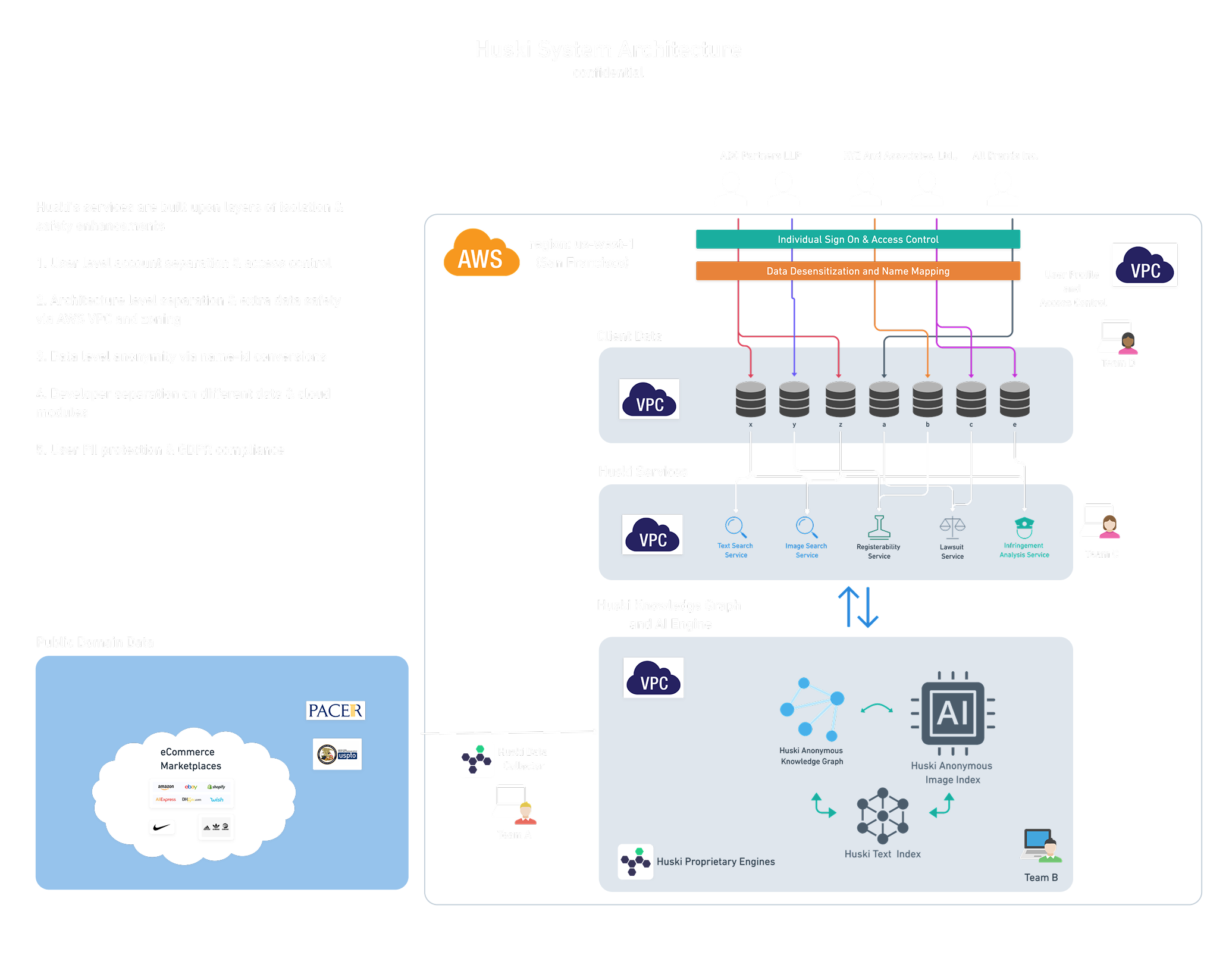Last Updated: April 17, 2025
At Huski.ai, information security and data privacy aren’t just features, they’re foundational. Every SaaS solution we offer is built on a security-first architecture grounded in industry best practices.
We are committed to prioritizing robust protections through principles like separation of duties, role-based access control, strong data governance, and privacy-aware computing. The chart below outlines the key components of our security framework and how we safeguard your data at every level. Keep reading for a closer look at how each element is implemented.

Huski.ai’s SaaS solutions are built on AWS, a leading cloud platform trusted by organizations like NASA and the US Department of State. AWS provides robust security features, including encryption, intrusion detection, and DDoS protection.
Huski.ai enhances this with:Huski.ai uses AWS S3, Aurora, Redshift, and EC2 for secure data storage, processing, and analysis. Data redundancy and disaster recovery are built-in, ensuring reliability. All data remains within AWS regions to comply with privacy regulations like GDPR, and developers never access raw user data directly.
Huski.ai leverages AWS for end-to-end data protection, ensuring security and compliance:The following chart provides an overview of how these principles are implemented and how our system is secured.
At Huski.ai, user privacy is a top priority. We comply with GDPR and CCPA, ensuring users have full control over their personal data. Personal Identifiable Information (PII) is never accessed by developers or shared with third parties. Users can request data deletion at any time, and we promptly act to remove their activity traces. Read more in our Terms of Use and Privacy Policy.
At Huski.ai, we are committed to the responsible integration of generative AI technologies to enhance our services while upholding strict data privacy standards. Our internal policy emphasizes three core principles: maintaining confidentiality by restricting the input of sensitive data into AI systems; ensuring responsible use by holding our team accountable for AI-generated content; and conducting thorough, service-specific reviews to assess data processing practices, compliance, and legal terms. As AI technology evolves, we remain dedicated to updating our policies proactively, fostering ongoing dialogue to refine best practices in managing AI-related risks within legal practices.